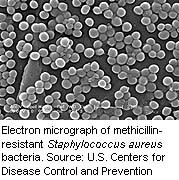Hospitals, health departments, long-term care facilities must share information
WEDNESDAY, Aug. 5, 2015 (HealthDay News) — Almost $8 billion in hospital bills could be avoided over five years by halting the spread of antibiotic-resistant bacteria, according to the Vital Signs report published Aug. 4 in the U.S. Centers for Disease Control and Prevention’s Morbidity and Mortality Weekly Report.
As many as 37,000 lives could be saved, and 619,000 new infections prevented, if community health departments and health care facilities form tight support networks to quickly identify and address emerging outbreaks of antibiotic-resistant bacteria, report author John Jernigan, M.D., director of the Office of Health Care-Associated Infection Prevention Research and Evaluation at the CDC, told HealthDay.
“Over the next five years, unless we implement nationwide improvements in infection control and antibiotic prescribing, if no action is taken, these infections will continue to increase,” Jernigan said. “Antimicrobial resistance problems in one hospital can affect what happens in another hospital when they share patients. Even if one facility is following recommended infection control practices, that doesn’t protect them from patients bringing antimicrobial-resistant germs into their facility from other hospitals or nursing homes.”
The CDC has included $264 million in its budget for the 2016 fiscal year to strengthen surveillance efforts and promote better collaboration among health care facilities, Jernigan said. The agency’s Antibiotic Resistance Solutions Initiative is expected to reduce infections of carbapenem-resistant Enterobacteriaceae, methicillin-resistant Staphylococcus aureus, and Clostridium difficile by half or more if successfully implemented, officials said.
Full Text
Copyright © 2015 HealthDay. All rights reserved.








